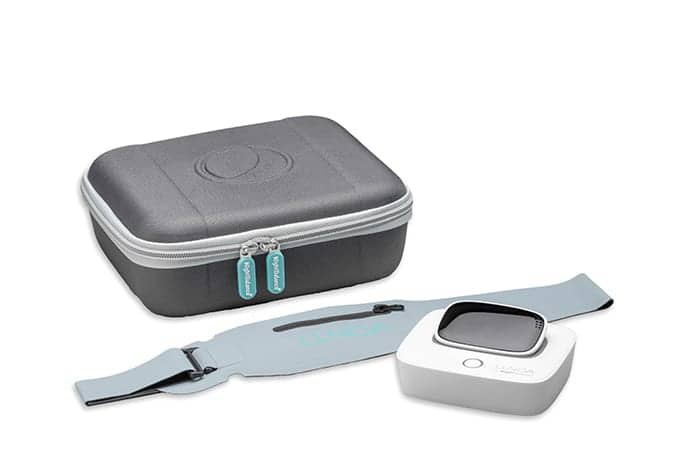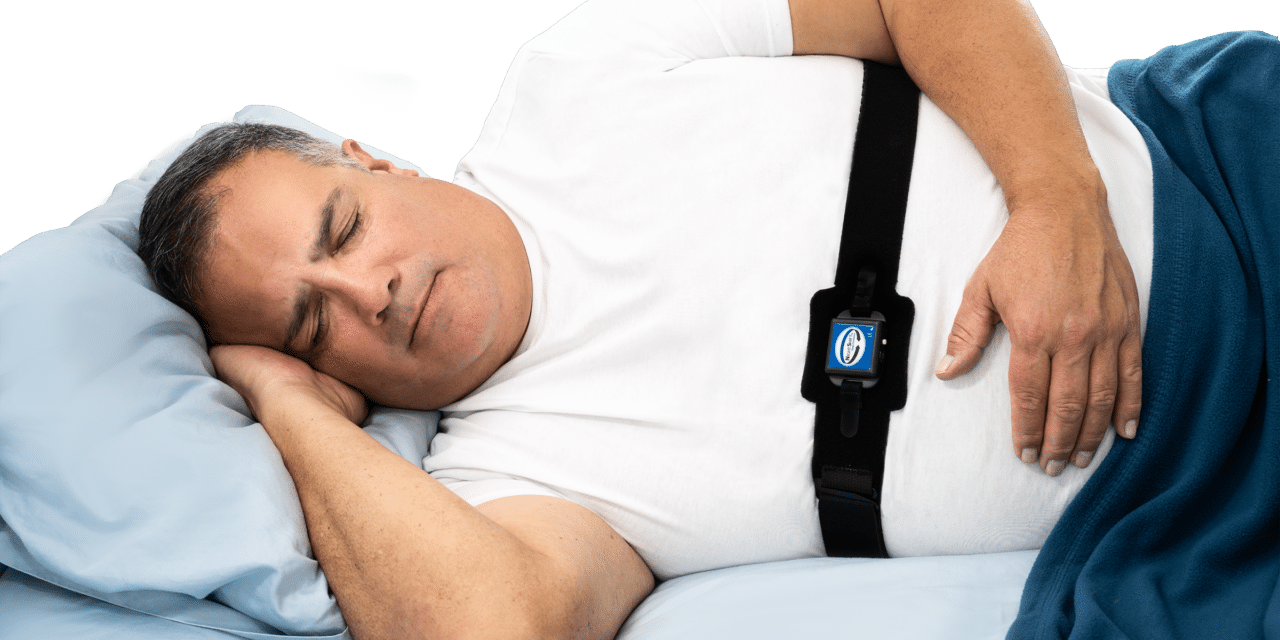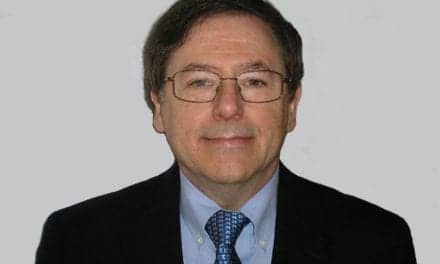CMS recently expanded Medicare coverage for electronic positional OSA devices. This could help your patients with early-stage sleep apnea.
By Alyx Arnett
The Centers for Medicare and Medicaid Services (CMS) recently expanded Medicare coverage to include certain positional obstructive sleep apnea therapy (OSA) devices, classifying them as durable medical equipment.
The decision, effective April 1, 2023, facilitates Medicare reimbursement for devices that specifically address positional OSA, where patients experience most apnea episodes while lying on their back (supine). Positional OSA is estimated to occur in over half of OSA patients, with exclusive positional OSA occurring in 20.1 to 36% of patients.1,2
Reimbursable positional therapy devices include Philips Respironics’ NightBalance and Advanced Brain Monitoring Inc’s Night Shift, which are worn around the chest (NightBalance) or chest or neck (Night Shift). The systems deliver vibrotactile feedback when they detect a patient in the supine position, prompting them to move to a non-supine position.

The Medicare reimbursement determination incorporated findings from studies conducted on the NightBalance system, which put it on par with other sleep apnea treatment modalities. One study comparing NightBalance to auto-adjusting positive airway pressure (APAP) for the treatment of positional OSA showed that NightBalance was non-inferior to APAP in efficacy and had greater adherence.3 Another study determined that NightBalance and oral appliance therapy were equally effective in reducing the median apnea-hypopnea index (AHI) in patients with mild-to-moderate positional OSA.4
While the Medicare reimbursement evidence focused on NightBalance, Night Shift also has demonstrated treatment efficacy and adherence. In one study, 90% of positional OSA patients responded to Night Shift, with a median AHI reduction of 79%.5 Clinical results also showed that 88% of patients used Night Shift regularly, and 71% used it at least four hours per night.6
Daniel Levendowski, president and co-founder of Advanced Brain Monitoring and lead author of these Night Shift studies, is hopeful that the Medicare reimbursement will help positional therapy find its footing in the United States.
“As physicians begin to recognize that there’s now reimbursement, it not only establishes a higher level of credibility for the therapy, but it also makes it more convenient for both them and their patients,” says Levendowski.
How Positional Therapy Reimbursement Impacted the Netherlands
With electronic positional OSA therapy devices now reimbursable by Medicare in the United States, one of the main barriers to the treatment—cost—is eliminated for some patients, which could result in more prescriptions.
That was the case in the Netherlands after the devices secured reimbursement in December 2017, after which there was a noticeable shift toward positional therapies, according to Nico de Vries, MD, PhD, an ear, nose, and throat surgeon at OLVG West Hospital Amsterdam and co-author of the study of NightBalance versus oral appliance therapy.

Since the reimbursement, de Vries has prescribed NightBalance to over 1,200 patients. “Before reimbursement, there were not many prescriptions because if the patient had to make a choice between something that was reimbursed and something that they had to pay for themselves, many patients would not start with positional therapy. But now there are many patients who say, ‘Let’s give it a try first,’” says de Vries, who’s also a professor of dental sleep medicine at the Academic Center for Dentistry Amsterdam and guest professor at the University of Antwerp, Belgium.
It makes sense to start with the therapy, he says. A study he co-authored found that, in the early stages of OSA, more than 50% of mild OSA patients were positional,7 initially defined by Rosalind Cartwright, PhD, in 1984 as a supine apnea-hypopnea index (AHI) greater than twice the non-supine AHI.8
“It’s very simple in early-stage disease to see if you can prevent people from sleeping on their back while not disrupting sleep quality, and that is what these devices do,” de Vries says. “When the disease gets more severe, you will see that number of events in the other sleep positions goes up as well. But in early stages, that is how it begins, and there’s more early-stage and moderate sleep apnea in the world than severe disease. So it’s completely, totally accepted in positional patients to start with it.”
The reimbursement in the Netherlands led to a more diversified, patient-centric treatment approach, according to de Vries. After a patient has a sleep study, their treatment options are laid out: CPAP, oral appliance therapy, positional therapy (if they’re positional), and sleep surgery. “In the process of shared decision-making, you start something, but we are absolutely not forced to start with CPAP,” he says.
Combination treatment is also common for certain patients. De Vries’ comparative study of positional therapy and oral appliances found that treatments, when combined, can reduce AHI by 75% in patients with moderate OSA, up from a reduction of about 50% with either modality alone. Research also suggests that when patients using oral appliances have residual OSA, they should be checked for positional OSA. If present, combination therapy should be considered.9
Further, de Vries has seen positional therapy benefit patients after sleep surgery. “There are patients who have had sleep surgery, and everything is better. But not when they sleep on their back,” he says. “So they have improved from severe non-positional disease to less severe positional disease. Then you add positional therapy to it, and you’re good.”
Expectations for the US Market
David White, MD, a professor of medicine at Brigham and Women’s Hospital, division of sleep medicine, lobbied to get reimbursement for NightBalance when he worked for Philips several years ago. “Getting reimbursement for the device was a very big deal and should drive more physicians to prescribe the device,” White says. “I have always been amazed how many patients with clear positional OSA are simply placed on CPAP when the NightBalance device was available. Hopefully, that will now change with reimbursement.”
Advanced Brain Monitoring’s Levendowski cautions, however, that some home sleep tests don’t assess position. He believes that increased awareness among physicians about the reimbursement for positional therapy could change diagnostic practices. “If more physicians knew that positional therapy was now reimbursed, maybe they would request or demand that position is included in the diagnosis,” he says.
Hyun-Woo Shin, MD, PhD, of the OUaR LaB (Obstructive Upper Airway Research Laboratory) and associate dean of research affairs and associate professor at Seoul National University College of Medicine, agrees. “Understanding the relationship between sleep position and apnea severity helps healthcare professionals develop personalized strategies to mitigate the impact of sleep apnea,” says Shin, who also works in the department of biomedical sciences at Seoul National University Graduate School and the department of otorhinolaryngology at Seoul National University Hospital.
Positional OSA Therapy Reimbursement Rates
CMS established the reimbursement rate for positional sleep apnea therapy devices by referencing a median internet retail price of $529.99. This rate determines the Medicare rental payment structure, where the initial three months carry an average fee of approximately $31.87 per month, decreasing to about $23.90 for the next 10 months, totaling around $334.61 over a 13-month period.
This reimbursement model is significantly lower than the manufacturer-suggested retail price for NightBalance, which was listed at $849 in October 2022, according to CMS. CMS did not use that pricing and instead used fees for comparable items “to best approximate reasonable charges,” according to a document from CMS’ 2022 Healthcare Common Procedure Coding System public meeting.
Night Shift is currently priced at $400, according to Levendowski. Looking ahead, Levendowski says Advanced Brain Monitoring will launch initiatives this year aimed at enhancing patient understanding of benefits and has retained Pristine Medical Billing to assist providers with their in-network billing.
Levendowski also addresses the potential for private payer reimbursement following Medicare’s lead. “Once there’s reimbursement by Medicare, the private payers tend to follow. So it’s just a matter of fully establishing it with them, and that’s part of the process,” he says.
Redefining Positional OSA for Therapy Selection
Since Cartwright defined positional OSA, other methods have been proposed to classify the condition. A recent study identifies one of those methods—Levendowski’s Overall/NS-AHI, defined as overall AHI severity at least 1.4 times the non-supine severity—as a potentially improved approach for evaluating positional OSA.10
In the study, Overall/NS-AHI had the highest sensitivity, specificity, diagnostic odds ratio, positive likelihood ratio, and the lowest negative likelihood ratio of the four methods examined. The findings replicated what Levendowski concluded in a study he co-authored five years earlier.11 The studies suggest that Overall/NS-AHI most consistently detects those most likely to benefit from positional sleep apnea therapy.
“So if you are going to recommend somebody for position therapy now that is reimbursed, use this alternative formula,” Levendowski says.
Levendowski explains that the limitation of the current assessment method is that it does not take into account sleep time during supine and non-supine positions. “The issue is that if you just divide supine AHI, and they sleep on their back for 15 minutes, they can come out with that calculation as having positional sleep apnea. But if you kept them off their back, it would do very little to change the overall AHI.” He emphasizes that for positional therapy to be effective, a patient’s severity level in non-supine positions must be considered, alongside the amount of time they spend on their back.
Levendowski further clarifies, “If somebody has an AHI of 15 in the non-supine position and they sleep 95% of the time on their side, then positional therapy’s not going to help them.” The traditional method of dividing supine AHI by non-supine AHI, he argues, fails to accurately reflect the potential impact of positional therapy.
“You have to select the optimal patients, and if you select patients based on the old criteria, you may not change the outcome,” he says.
References
- Sabil A, Blanchard M, Trzepizur W, et al. Positional obstructive sleep apnea within a large multicenter French cohort: prevalence, characteristics, and treatment outcomes. J Clin Sleep Med. 2020;16(12):2037-46.
- Heinzer R, Petitpierre NJ, Marti-Soler H, et al. Prevalence and characteristics of positional sleep apnea in the HypnoLaus population-based cohort. Sleep Med. 2018;48:157-62.
- Berry RB, Uhles ML, Abaluck BK, et al. NightBalance sleep position treatment device versus auto-adjusting positive airway pressure for treatment of positional obstructive sleep apnea. J Clin Sleep Med. 2019 Jul 15;15(7):947-56.
- Benoist L, de Ruiter M, de Lange J, et al. A randomized, controlled trial of positional therapy versus oral appliance therapy for position-dependent sleep apnea. Sleep Med. 2017;34:109-17.
- Levendowski DJ, Seagraves S, Popovic D, et al. Assessment of a neck-based treatment and monitoring device for positional obstructive sleep apnea. J Clin Sleep Med. 2014 Aug 15;10(8):863-71.
- Levendowski D, Cunnington D, Swieca J, et al. User compliance and behavioral adaptation associated with supine avoidance therapy. Behav Sleep Med. 2018;16(1):27-37.
- Ravesloot MJL, Benoist L, van Maanen P, et al. Novel positional devices for the treatment of positional obstructive sleep apnea, and how this relates to sleep surgery. Adv Otorhinolaryngol. 2017;80:28-36.
- Cartwright RD. Effect of sleep position on sleep apnea severity. Sleep. 1984;7(2):110-14.
- Dieltjens M, Vanderveken O. Oral appliances in obstructive sleep apnea. Healthcare (Basel). 2019 Nov 8;7(4):141.
- Al Oweidat K, Toubasi AA, Al-Iede M, et al. Comparing the diagnostic value of the positional obstructive sleep apnea definitions. Respir Med. 2023;212:107227.
- Levendowski DJ, Oksenberg A, Vicini C, et al. A systematic comparison of factors that could impact treatment recommendations for patients with positional obstructive sleep apnea (POSA). Sleep Med. 2018;50:145-51.
Photo caption: Night Shift
Photo credit: Advanced Brain Monitoring




![Advances in the Treatment of Positional Sleep Apnea [Video]](https://sleepreviewmag.com/wp-content/uploads/2019/02/supine-sleep-440x264.jpg)
